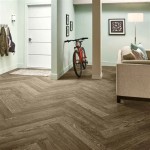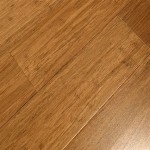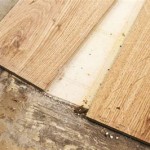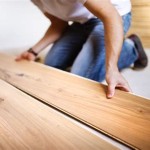Make Bamboo Flooring Work for You: Acclimation Strategies
Bamboo flooring is an increasingly popular choice for homeowners due to its durability, versatility, and environmental friendliness. However, to ensure its longevity and aesthetic appeal, proper acclimation is crucial. Acclimation allows the bamboo flooring to adjust to its new environment, reducing the risk of buckling, shrinkage, or expansion once installed.
Understanding the Acclimation Process
Acclimation involves exposing the bamboo flooring to the temperature and humidity levels of the environment where it will be installed. This process can take several days and should be performed before the flooring is installed. The goal is to allow the flooring to adjust gradually to the new conditions, minimizing the potential for movement.
Ideal Acclimation Conditions
The ideal acclimation conditions for bamboo flooring vary depending on the type of flooring and the climate zone. However, general guidelines include:
- Temperature: 60-80°F (15-26.7°C)
- Humidity: 40-60%
Acclimation Procedures
There are two common methods for acclimating bamboo flooring:
1. On-Site Acclimation:
- Place the unopened boxes of flooring in the room where it will be installed.
- Leave the boxes sealed for 3-5 days, allowing the flooring to adjust to the room's temperature and humidity.
2. Factory Acclimation:
- Purchase pre-acclimated flooring from the manufacturer.
- This method ensures that the flooring is acclimated to the specific climate zone before it is delivered.
Measuring Moisture Content
To ensure that the bamboo flooring is properly acclimated, you can measure its moisture content. Use a moisture meter to check the moisture content of the flooring. Ideally, it should be within 2-4% of the moisture content of the subfloor or concrete slab where it will be installed.
Importance of Acclimation
Proper acclimation is essential for the following reasons:
1. Reduces Movement:
- Acclimation minimizes the risk of the flooring absorbing or releasing moisture, which can lead to buckling or shrinkage.
2. Improves Stability:
- Properly acclimated flooring is less likely to shift or creak, providing a more stable and durable surface.
3. Extends Flooring Life:
- Acclimation helps prevent premature degradation, extending the lifespan of the bamboo flooring.
Conclusion
By following proper acclimation strategies, you can ensure that your bamboo flooring performs at its best. Acclimation allows the flooring to adjust to its new environment, reducing the risk of damage and enhancing its longevity. Taking the time to acclimate your bamboo flooring is an essential investment in the beauty and durability of your home.

Bamboo Flooring Quality How To Distinguish High Vs Low Cali

Top 10 Bamboo Flooring Myths Facts Cali

Top 10 Bamboo Flooring Myths Facts Cali

Top 10 Bamboo Flooring Myths Facts Cali

Top 10 Bamboo Flooring Myths Facts Cali

How To Install Bamboo Flooring Floated Diy Method

Everything You Need To Know Before Installing Bamboo Flooring

Bamboo Based Composites A Review On Fundamentals And Processes Of Bonding Sciencedirect

Hardwood Flooring Color Selection Guide Cali
How To Acclimate Solid Hardwood Flooring On Vimeo
See Also







